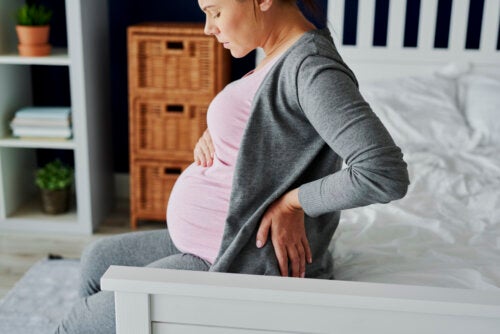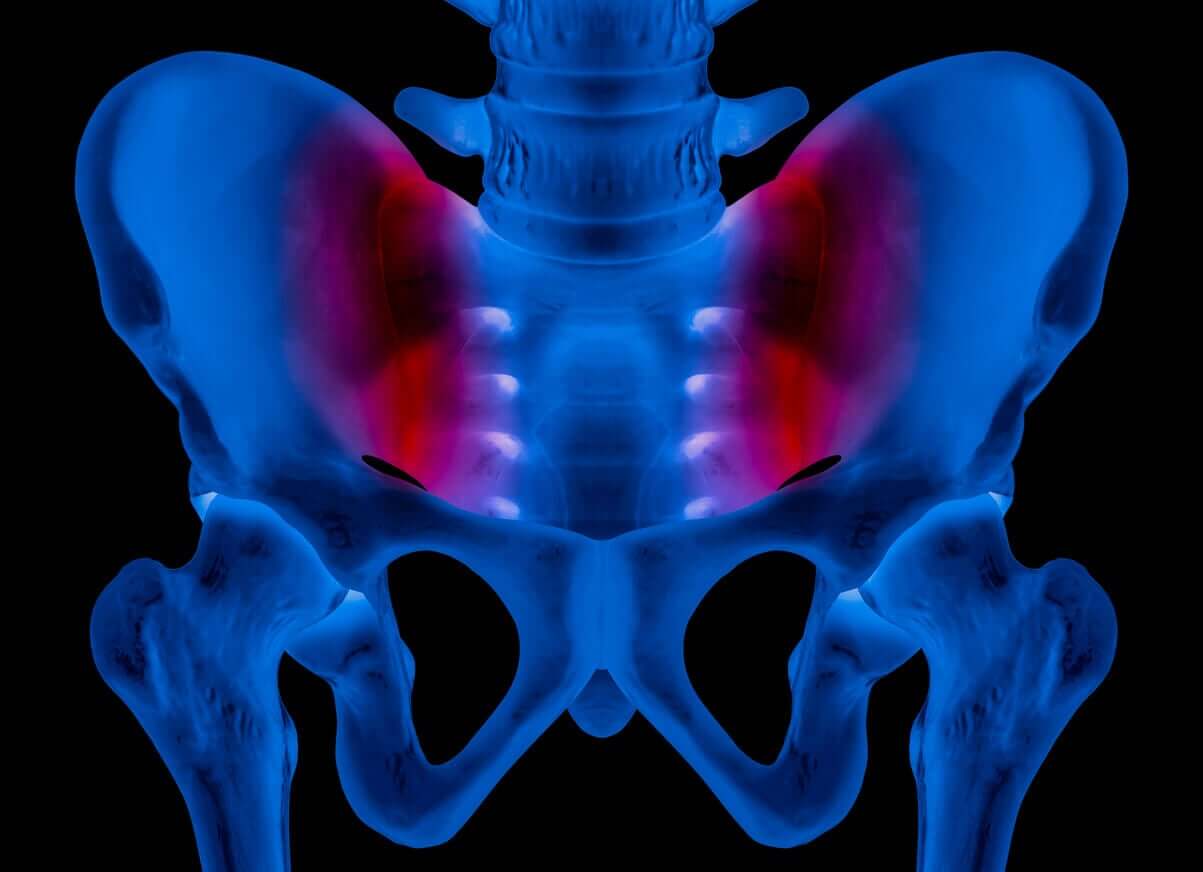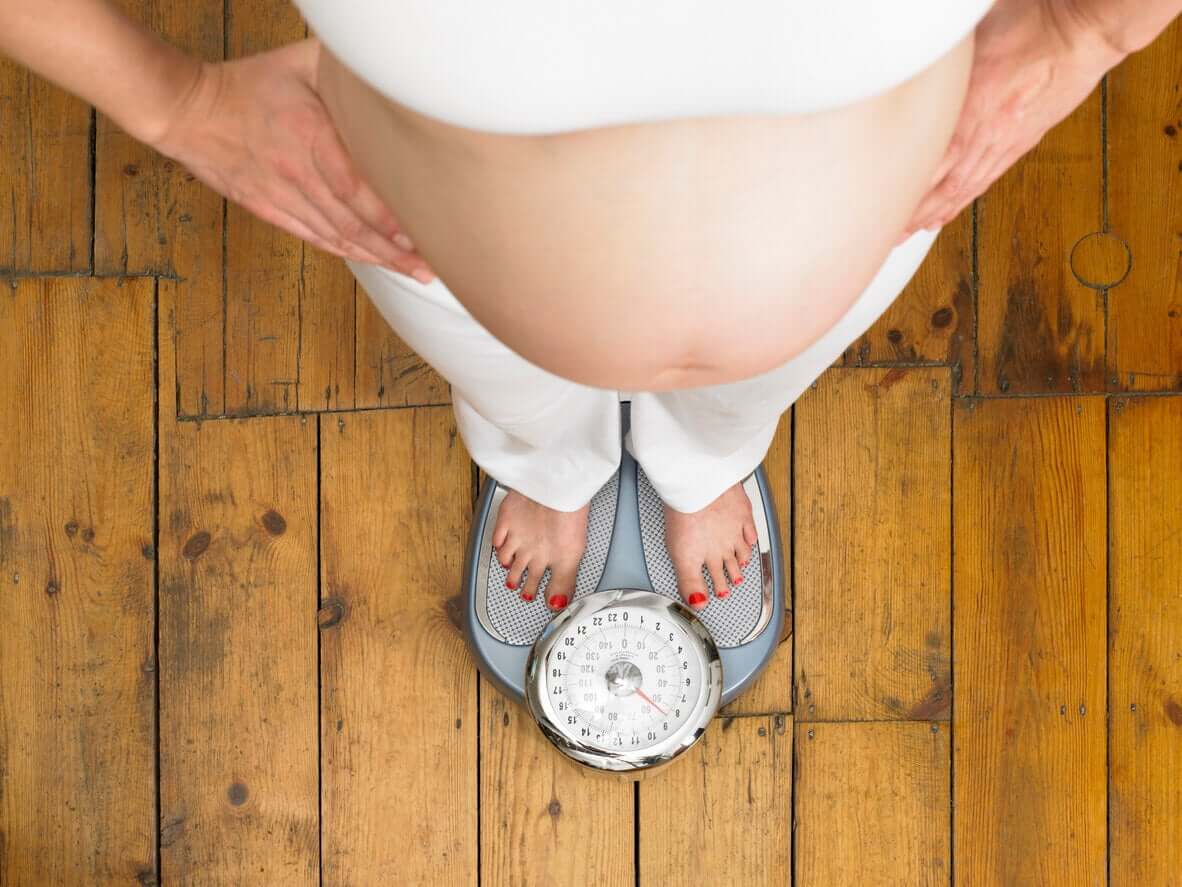Sacroiliitis in Pregnancy: Symptoms and Treatment

Lower back pain is very common among pregnant women, especially towards the end of the second trimester. Sometimes, this pain can be the manifestation of sacroiliitis in pregnancy, as the hormonal state and the biomechanical changes increase the joint mobility of the pelvis.
It’s important to know that lower back pain is to be expected as the baby grows. However, sacral pain during pregnancy requires a professional evaluation to determine the steps to follow.
What is sacroiliitis in pregnancy?
Sacroiliitis is the inflammation of the joint of the iliac bone with the sacrum, which can occur on one or both sides. Like any joint inflammatory process, it’s accompanied by pain that’s usually very acute and specific.
During the final stage of pregnancy, back pain is quite frequent, as well as the feeling of tired legs or discomfort in the sacrum area. Even so, it’s important to know what the expected symptoms of sacroiliitis are in order to make a timely consultation when they appear.

Te symptoms of sacroiliitis in pregnancy
The diagnosis of sacroiliitis is clinical. That is, a few data in the interview and a detailed clinical examination are enough to diagnose it. Imaging studies aren’t essential in this condition.
One of the fundamental points of the consultation is to differentiate sacral pain from lower back pain, as the approach is different.
We invite you to discover the most frequent symptoms of sacroiliitis in pregnancy:
- Local pain: it’s a deep pain in the sacrum, specifically in the inflamed joint area.
- Low back pain: it’s not always present, and when it occurs, it’s mistaken for pain of a vertebral origin.
- False sciatic pain: sometimes, the contracture of the muscles that surround the sciatic nerve compresses it and produces symptomatology that’s similar to sciatic pain.
- Radiation of pain: pain from joint inflammation can radiate to the buttocks or legs, from the affected side if it’s unilateral, or from both sides if the inflammation is bilateral.
- Night pain: it can even wake the mother during the night, which affects her rest and quality of life.
- Specific painful movements: the pain manifests more clearly after spending a long time standing, when trying to climb steps, or when performing the gesture of sitting down.
- Muscle contractions: the pyramidal muscles are located in a deeper plane than the buttocks and are the ones that are most stressed in this condition.
The symptoms of sacroiliitis are usually constant and can intensify over time, so it must be detected early and treated.
Why does sacroiliitis occur?
The sacroiliac joints are designed to support and transfer the weight of the body, so their main function isn’t movement.
During pregnancy, the pelvic joints gain mobility thanks to hormonal changes (such as an increase in relaxin) and the weight of the baby inside the abdomen. Therefore, mobility is necessary to allow the baby to pass through the birth canal.
In addition, the increase in maternal weight, changes in gait, and, eventually, fluid retention further favor the onset of sacroiliitis in pregnancy.

Treatment of sacroiliitis
Treatment in pregnancy is conservative and is done through physiotherapy. The main objective of this approach is to reduce the mother’s discomfort and improve her quality of life.
It works using techniques that help reduce local pain while improving the mobility and body awareness of the pregnant woman.
Once the muscle discomfort subsides, treatment progresses to strengthen the pelvic floor muscles. Likewise, it seeks to improve the mechanics of the movement of the pregnant woman to prevent the painful picture from reappearing.
It’s important to note that sacroiliitis can occur both in pregnancy and in the puerperium because, during the weeks after birth, the maternal body undergoes numerous modifications again. At this stage, gait imbalances, hormonal, and biomechanical changes can also occur, which are capable of predisposing these joints to inflammation.
All cited sources were thoroughly reviewed by our team to ensure their quality, reliability, currency, and validity. The bibliography of this article was considered reliable and of academic or scientific accuracy.
- Cohen SP, Chen Y, Neufeld NJ. Dolor articular sacroilíaco: una revisión integral de la epidemiología, el diagnóstico y el tratamiento. Experto Rev Neurother. 2013 Jan;13(1):99-116. doi: 10.1586/ern.12.148. PMID: 23253394.
- Lacassie, Q. Héctor. Dolor y embarazo. Revista Médica Clínica Las Condes 25.4 (2014): 641-650.
- Blanco, Enrique, et al. Dolor sacroilíaco: Revisión actualizada del enfrentamiento diagnóstico. Revista Chilena de Ortopedia y Traumatología (2021).
- Venegas, Mónica, et al. Dolor lumbopélvico asociado a discapacidad durante el tercer trimestre de embarazo y su evolución posterior al parto. Revista chilena de obstetricia y ginecología 83.6 (2018): 567-585.